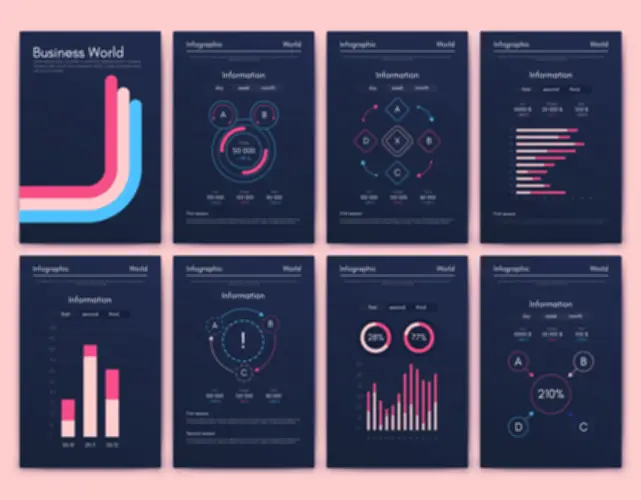Beta Labs strongly advocates Docker as a result of the set up of the Docker desktop managed everything for it whereas they might concentrate on the coding half. Dealing With top-level structure became easier with the declarative nature of the instruments that provided a simple description of how runtime elements talk to every other. The startup appreciates Docker for permitting them to bundle their application together with exactly the sort of environment they wanted. As An Alternative of copying the hardware layer, containerization removes the operating system layer from the self-contained surroundings.
The architecture of containerized systems involves several core elements that work together to provide a sturdy and scalable infrastructure for functions. Containerization, also called container stuffing or container loading, is a relatively new idea within the realm of software development. It refers back to the means of abstracting software program code and its needed libraries. By adopting Kubernetes, Google has changed the greatest way its teams collaborate and ship merchandise. Firms looking for sustained progress can study from Google’s instance and think about options like growth group extension to duplicate such successes. This orchestration tool revolutionized how applications are managed and deployed.
To get a better thought of exactly how containerization works, let’s take a closer look at how all of the items — from hardware to the containerized software — fit together. In essence, this curated roadmap is greater than only a collection of links, it’s a strategic pathway designed to elevate your technical acumen and operational agility. By progressing from foundational container ideas to the superior orchestration expertise wanted in at present’s distributed environments, you’re investing in a future-ready ability set. And with Portainer by your side, you’re by no means far from the support and tools that make this complicated journey not just manageable, however actually transformative.
Trying to build testing environments that completely mimic manufacturing environments was time consuming, so developers wanted a greater way. From startups to the likes of Netflix, the massive tech guys, companies have embraced containerized functions to try and remedy intricate challenges and usher innovation. Let’s take this opportunity to get deeper into containerized applications-the key elements of it, their benefits, and the way they reshape the modern know-how landscape.
That being stated, allow us to first dive into the challenges confronted with a virtual machine and how containers can instead assist minimize down growth prices. In 2013, Docker was launched, eliminating the said downside by disrupting the software program development processes. It allowed Linux-based codes to run effectively on Windows-based techniques by way of Docker. Although it was theoretical back then, Microsoft was the primary to make this potential in 2016. Ever since, many web sites and main tech giants such as Shopify, Pinterest, Riot Games, and extra have been using containerization expertise. A container picture is a snapshot of a filesystem that contains every little thing needed to run a selected application or service, including the code, libraries, binaries, and configurations.
Consistency Across Environments
- Thanks to this containerization profit, the chance of conflicts and vulnerabilities is reduced to a minimal.
- One Other cause companies keep away from containerization is that containerizing legacy software program just isn’t as easy as flipping a switch.
- This course of refers to reworking monolithic (legacy) applications into cloud-native purposes built on microservices structure designed to integrate into any cloud surroundings.
- Moreover, their growth groups were in a place to reduce deployment instances from weeks to mere hours.
This portability makes cloud migrations easy and permits scaling with ease in hybrid or multi-cloud environments. DevOps containerization accelerates, improves effectivity, and secures development by separating an software’s features from other software program and hardware requirements. As A Outcome Of containers are isolated and self-contained, they can saas integration operate on any host operating system without affecting other hardware or software program. Because of its adaptability, developers can create “develop as soon as, run anywhere” apps.
Kubernetes
Additionally, the ability to shortly scale applications as demand fluctuates minimizes waste and enhances profitability. Furthermore, organizations adopting this agile method have reported a lower in server provisioning occasions by 70%, enabling them to reply swiftly to market changes. Organizations proceed shifting to the cloud, where customers can develop functions rapidly and efficiently. It additionally works with any container system that conforms to the Open Container Initiative (OCI) requirements for container picture codecs and runtimes. Nevertheless, the emergence in 2013 of the open-source Docker—an industry standard for containers with simple developer instruments and a common packaging approach—accelerated the adoption of this know-how. Today, organizations more and more use containerization to create new functions and modernize present purposes for the cloud.
Historically, software program functions had been installed instantly onto the operating system of a number machine, making it tough to move the appliance to a special https://www.globalcloudteam.com/ machine or to scale it up or down. Containerization solves this drawback by packaging an software together with its dependencies and libraries into a single executable unit referred to as a container. Proper now, containers and VMs work as complementary options somewhat than competing applied sciences. Containers make it easy to share and deploy applications on public or personal clouds. Extra importantly, they supply consistency that helps operations and development groups cut back the complexity that comes with multi-platform deployment.

This capability will increase resource optimization and drives server efficiencies, reducing server and licensing costs. Containers are sometimes known as “lightweight”—they share the machine’s OS kernel and do not require the overhead of associating an OS within each application (as is the case with a VM). Different container layers (common bins and libraries) can be shared among a number of containers, making containers inherently smaller in capability than a VM and sooner to start up.

However plenty of applications constructed to run in cloud environments don’t use containers at all, he added. A public cloud can host a monolithic application simply as easily as a collection of microservices. Instead, containers run “on top” of a container runtime platform that abstracts the sources.

This workflow outlines the levels in deploying a containerized software from code commit to production. Containers, however, run immediately on the host OS’s kernel, sharing the underlying OS whereas maintaining isolation between functions. This makes containers lightweight — they don’t need their own OS, and so they can begin up almost instantly. Containers package deal describe the benefits of containerisation solely the appliance and its dependencies, making them far more environment friendly in phrases of resource utilization. In distinction, modern microservices architectures break down purposes into smaller, unbiased services that communicate by way of APIs. Each service can be developed, deployed, and scaled independently, promoting flexibility.



